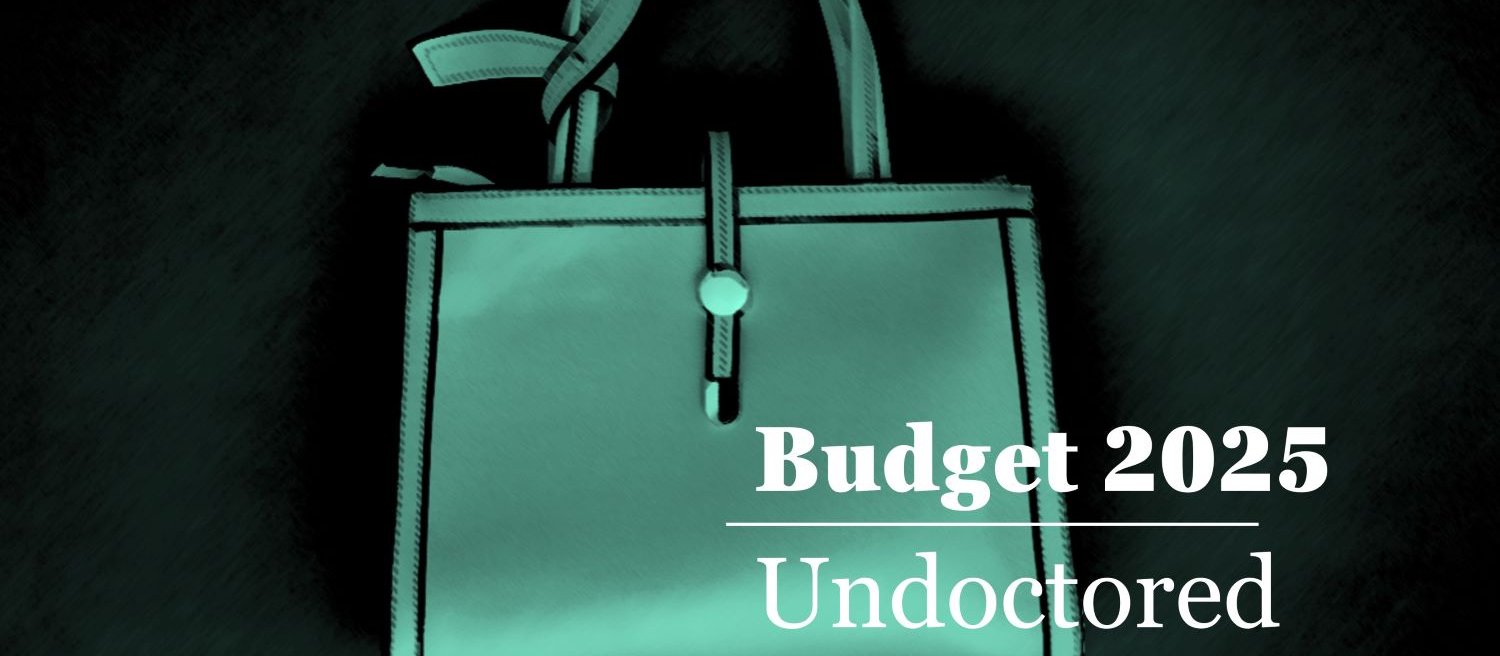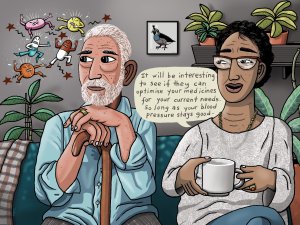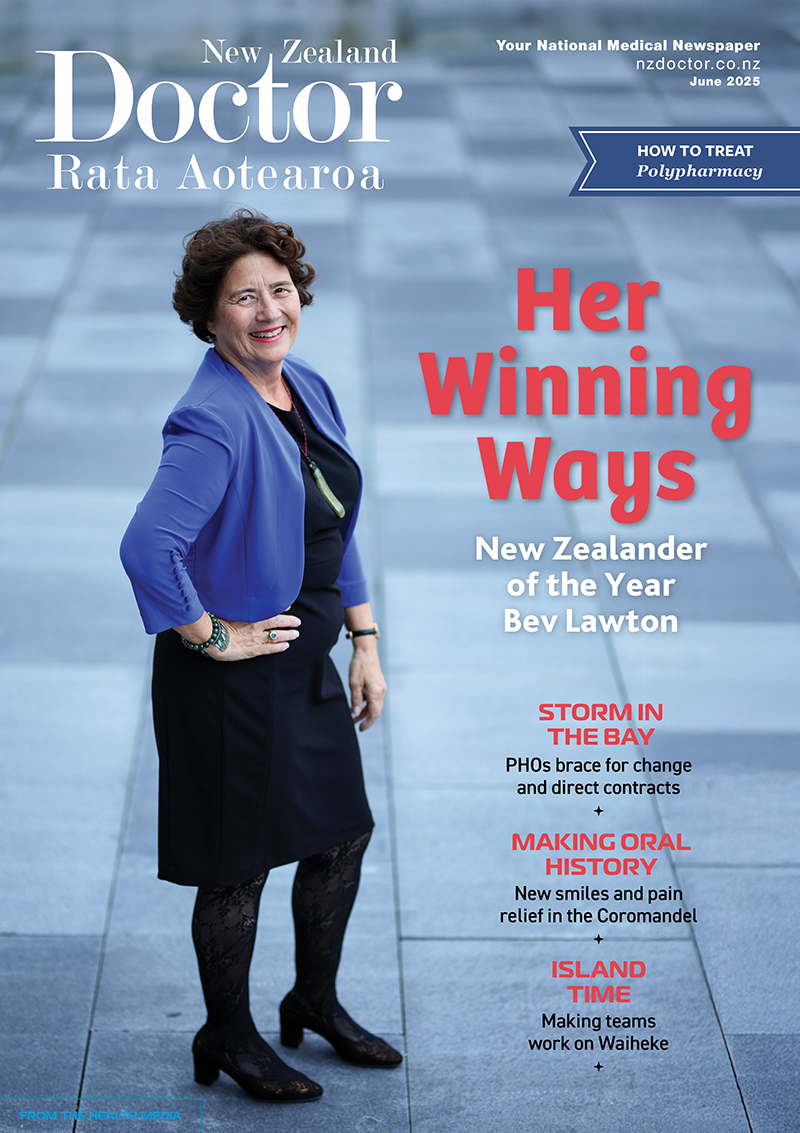For older people and frail people, the long-term benefit of medicines reduces and the potential for harm from adverse effects increases. When the benefit–risk balance changes in this way, medicine review and optimisation are important to simplify the therapeutic regimen, reduce inappropriate medicines and minimise risks. In this article, pharmacist prescriber Linda Bryant uses two case studies to illustrate important considerations during medicine reviews
BUDGET 2025: Budget reprioritises existing research funding towards commercially-focused science and innovation
BUDGET 2025: Budget reprioritises existing research funding towards commercially-focused science and innovation

Yesterday's Budget reprioritises existing research funding towards commercially-focused science and innovation.
A large portion goes to Invest NZ and a new gene tech regulator. Money has also been set aside for three of the four new PROs and disestablishing Callaghan Innovation, while several research grants face funding cuts.
"For the science system, Budget 2025 is both uninspiring and unsurprising.
"The overall delegation for Science, Innovation and Technology is $1.17B which is about $45M less than the last budget. Aotearoa has long languished in the bottom half of the OECD for spending on SIT as a share of GDP. Politicians and their advisors talk the big game of wanting to be more like Denmark, Finland and Singapore. But by the OECD’s own metrics, we’re more like Turkey and Greece. Maybe we’ll end up neighbours with Lithuania. Time will tell.
"The budget is largely a shuffling of the deckchairs, with no new investment in the major funds, and some taking from Peter to give to Paul.
"Most of the spending is from ‘reprioritisation’ to enable the SIT reforms. The Health Research Council and Catalyst Fund are down $29M while the Endeavour Fund, Strategic Investment Fund and Marsden Fund are stagnant. The cut to the HRC budget is a red flag, given the ill-considered defunding of the social sciences and humanities last year, and last week’s decision to pause a contestable Endeavour round in 2026. We’ve already seen the fallout of defunding across our network, with Māori researchers disproportionately impacted. Cuts in HRC funding will likely compound that. We will be closely watching for signals of a narrowing of scope to ‘deprioritise’ Māori health and public health research in the coming year.
"In terms of dedicated Māori SIT funding, the crumb gets some upsizing, with He Ara Whakahihiko Capability Fund increased from $5.98M to $10.98M. That’s a relatively big boost but from a very low investment base. In short, the crumb remains a crumb.
"Not so for gaming development firms who enjoy a third year of rebates ($44M) – two of them under the SIT appropriation - for eligible expenses which includes marketing and consumer research. That of course pales by comparison with the whopper $577M increase to the international screen production rebate (in the Economic Growth appropriation) which will take the government’s investment in the film industry to $1.09B over the next four years.
"The SIT budget is a world away from the recommendations made in the 2021 Ngā Pae o te Māramatanga report ‘Te Pūtahitanga: A Tiriti-led science-policy approach for Aotearoa New Zealand’. That report laid out an ambitious te ao Māori agenda for SIT reform, including the establishment of a mātauranga Māori entity, stronger monitoring of Māori SIT investment , and a more devolved approach to SIT to empower and support community-led priorities and solutions. It’s a vision to which we remain firmly committed."
Conflict of interest statement: Tahu Kukutai was the lead author on Te Pūtahitanga.
"The budget is, not unexpectedly, very disappointing with no new investment in research and development. In fact, money is being taken out of the funding of conducting R&D to fund the new structures, including the merger of the CRIs and establishment of the Science, the new gene regulator and the Innovation and Technology Advisory Council.
"While all these initiatives have some merit, by not budgeting separately for these, significant funding is being taken out of the engine room of R&D at a time when there is already considerable strain. The upshot is that the government's stated aim of increased commercialisation of science outcomes is highly unlikely to occur and the pipeline of discovery and development that drives innovation will be reduced."
Conflict of interest statement: "I am CEO of Lincoln Agritech, Professor at Lincoln university, CSO of Biosouth Ltd, and Managing Director of Agroceutical products NZ Ltd."
"Greater investment in geoscience research and education needed to be a priority of the budget, for a country plagued with natural hazards and the onrushing impacts of climate change. If we want economic growth, we need to strongly invest in a geoscience workforce that can guide the sustainable use of our natural resources and help us live with our natural hazards. Budget 2025 fails to achieve that, doing little to reverse the recent trajectory of cuts in funding across the stretched science and tertiary education sectors.
"There is a flatlining of major contestable funding and core funding for research and tertiary institutes. That hardly paints a picture of growth. While there is a welcome ~25% increase (from $38M to $48M) in funding for doctoral training and research that supports Vision Mātauranga, this is countered by cuts elsewhere. There is a ~$10M reduction to the Catalyst Funding used to drive important international collaboration that helps NZ to learn from innovations overseas.
"There are also reductions to funds that target collaboration between the tertiary sector and industry, as well as cuts to tertiary education scholarships and awards. The 3% increase in tertiary education fee funding is, on the one hand, much needed, but on the other hand, it is barely keeping pace with inflation.
"This budget tells me that we need to brace for more turbulent times ahead, and I worry for the stability of the science sector and training and retention of geoscientists and other scientists in Aotearoa and what that means for our country’s future prosperity and safety."
Conflict of interest statement: Sam McColl works for GNS Science where he receives funding from MBIE, but is commenting here in his capacity as the President of the Geoscience Society of New Zealand.



